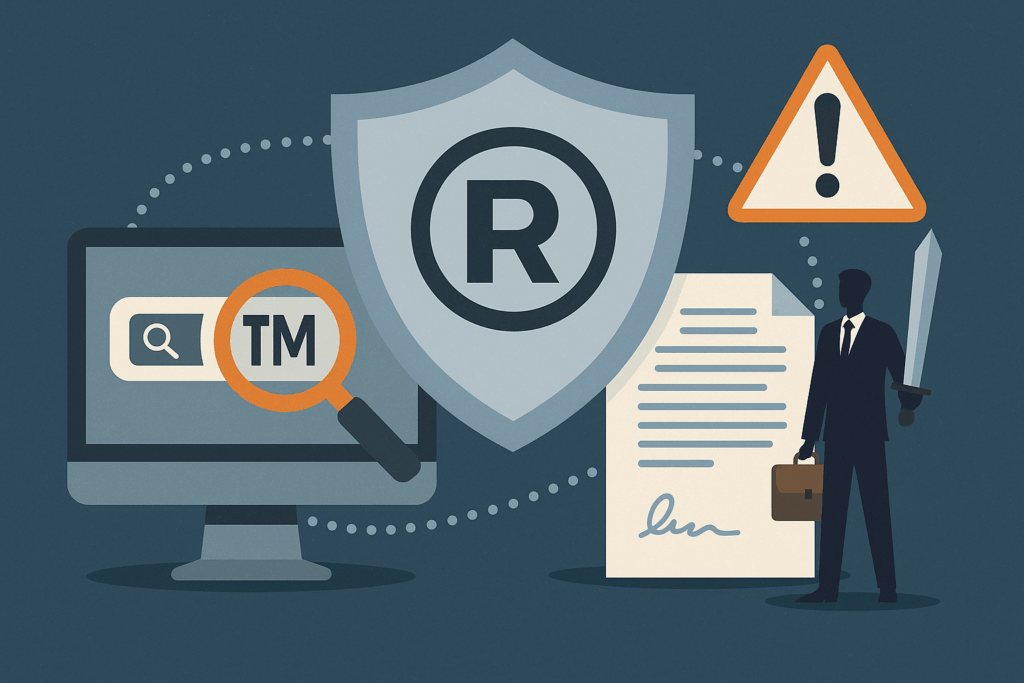Brand Control, Part 8: “Don’t Touch That Dial” — Monitoring and Enforcing Your Brand Rights
 Registering a trade mark isn’t the end of your brand protection journey — it’s the start of your enforcement strategy.
Registering a trade mark isn’t the end of your brand protection journey — it’s the start of your enforcement strategy.
Your registration gives you the legal tools to stop others from using your brand — but your competitors are not going to put their hand up from time to time and say “Hey, I just starting using a trade mark just like yours – hope you don’t mind!”.
Enforcement is not someone else’s job – it’s yours. If you don’t police misuse, you may not just miss an opportunity to stop infringement — you could also weaken your rights over time.
So what does effective brand monitoring and enforcement look like in practice?
👀 Watching the Watch List
If a competitor (or clueless newcomer) adopts a brand that’s similar to yours, you’ll only know about it if you’re actively watching. Here’s how to stay alert:
-
Trade Mark Monitoring: Keep an eye on the IP Australia register. You can use the official ATMOSS search tool, subscribe to their watch notices, use automated platforms like Markify or CompuMark for more comprehensive coverage, or hire an expert IP lawyer to watch for you (click here for details of one expert IP lawyer you should get to know).
-
Google Alerts: Set up alerts for your brand name — and for phonetically or visually similar names too. It’s free and easy, and can alert you to online content that references the brand.
-
Domain and Social Media Monitoring: Watch for new domain registrations, especially .com.au and .com variants. Do the same for social handles — brand impersonation or opportunistic registrations are common, particularly with new or growing businesses.
🛡️ Enforcement Options
Once you detect a potential issue, you’ve got several tools at your disposal. The right approach depends on the facts — and your appetite for escalation.
-
Letter of Demand: Often your first step. It should be firm but not aggressive — and proportionate to the conduct. Overreaching can backfire, both legally and reputationally.
-
Opposition Proceedings: If someone tries to register a trade mark that conflicts with yours, you can oppose the application within the allowed timeframe. Don’t let similar marks slip onto the register unchallenged.
-
Infringement Action: For more serious or persistent issues, you may need to bring proceedings in court. You’ll need to prove use of your registered mark and that the other party’s mark is either substantially identical or deceptively similar.
-
Misleading or Deceptive Conduct: If a competitor’s conduct is causing confusion — even if it doesn’t meet the threshold for trade mark infringement — you may have a claim under the Australian Consumer Law.
-
Passing Off: This common law action protects the goodwill associated with your brand. If a competitor is misrepresenting their goods or services as being connected with yours — for example, by copying your get-up, name, or branding in a way that misleads consumers — you may be able to bring a passing off claim. You’ll need to show that you have a reputation in the mark, that the conduct is likely to cause deception, and that you’ve suffered or are likely to suffer damage. It’s often run alongside an ACL claim, but can also stand alone — especially if your mark isn’t registered.
-
Take-Down Mechanisms: Major platforms (Amazon, Meta, Google, domain registrars) have processes for removing infringing content, counterfeit listings, or cybersquatted domains. These are often faster and cheaper than court action, and can be effective — if you have the paperwork and rights to back it up.
💡 IP Mojo Tip
Silence equals permission. If you don’t act against brand misuse, courts and platforms may assume you’re okay with it. That can hurt your position if you later try to enforce your rights — and it can embolden others to test your boundaries.
Staying vigilant is part of staying strong. A trade mark isn’t just a certificate on a register — it’s a tool to be used. Know when and how to use it, and your brand will thank you later.